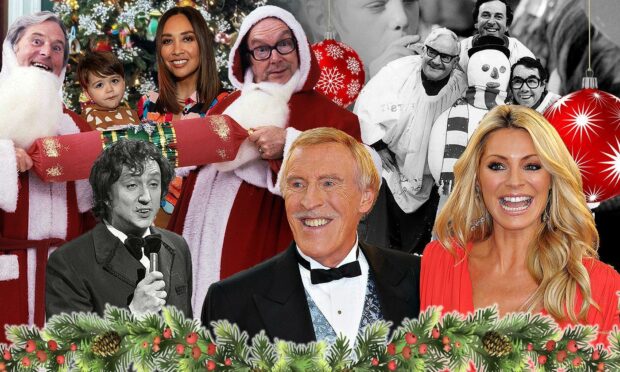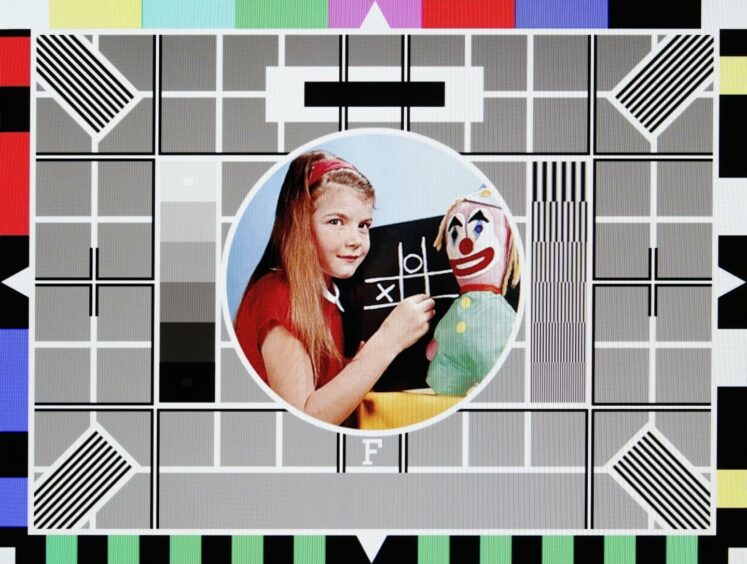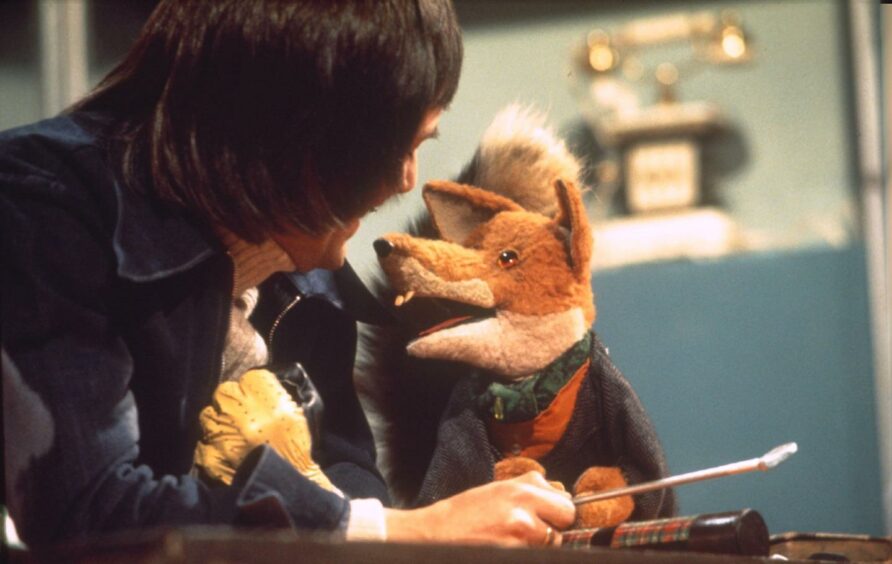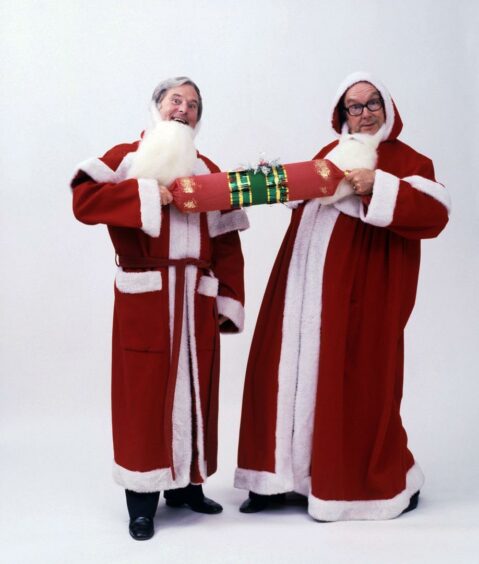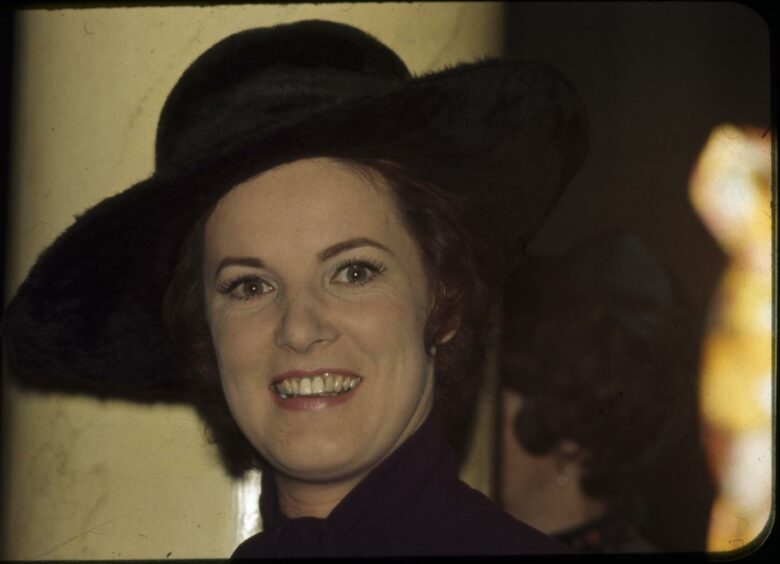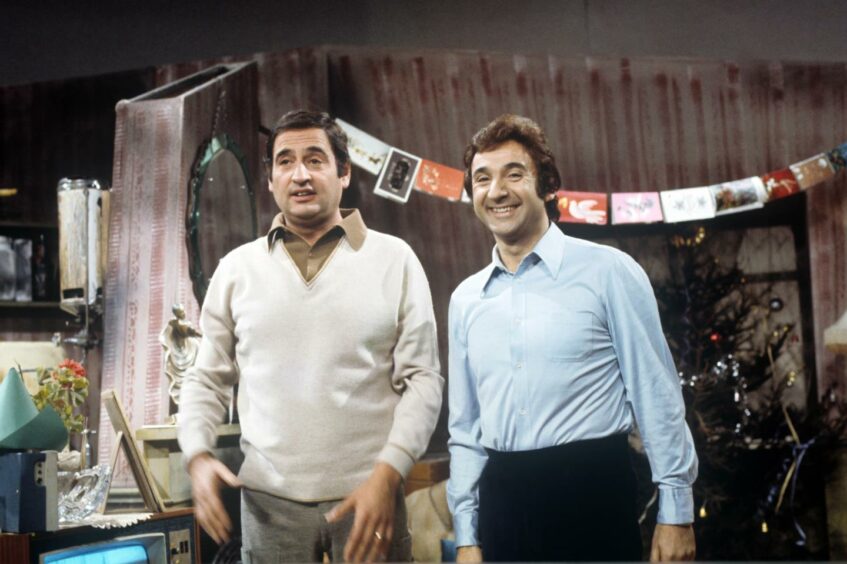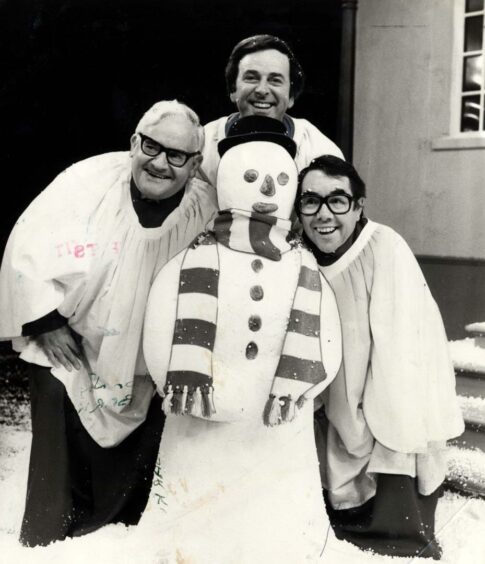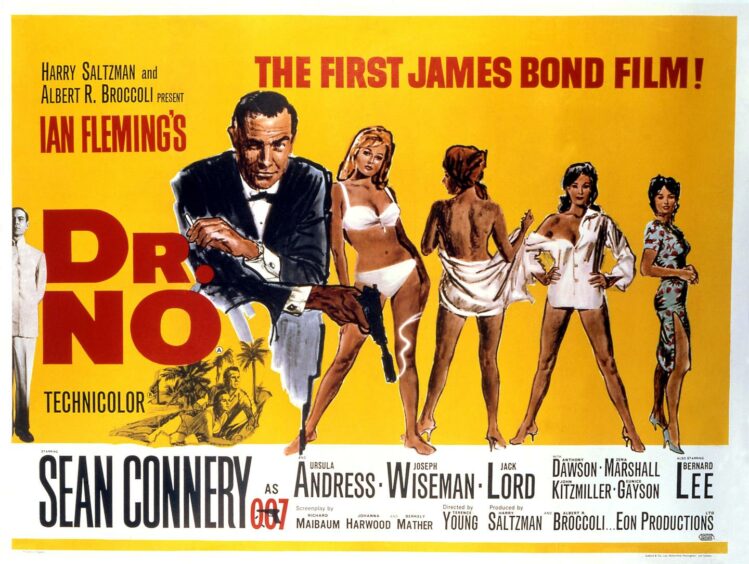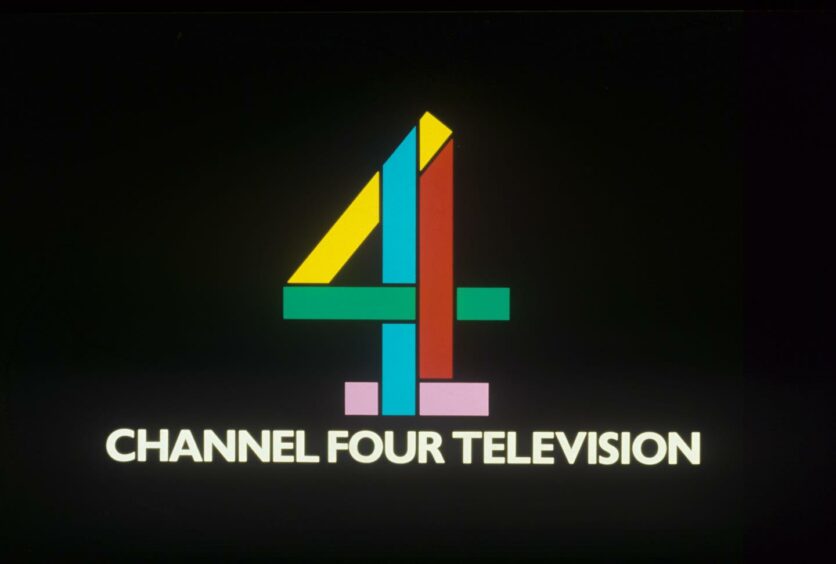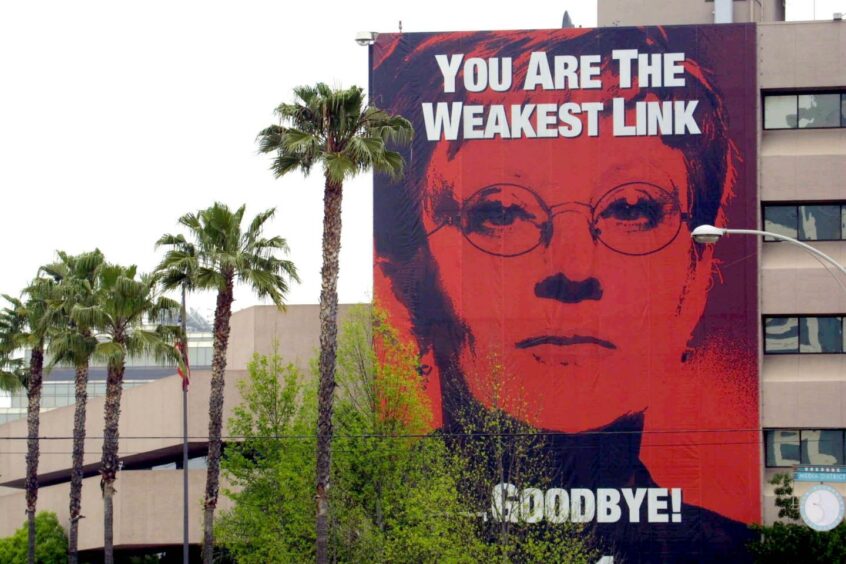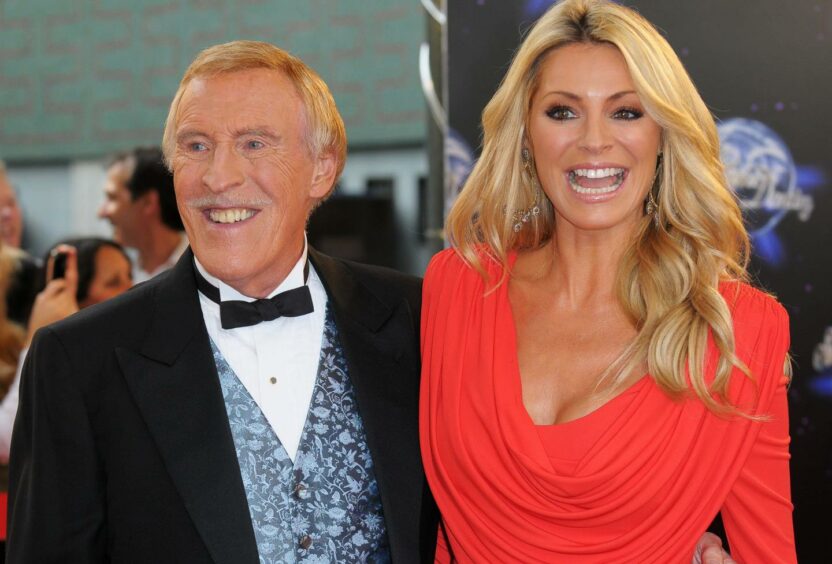It defines Christmas – vegetating round the TV with the family, absently reaching for a chocolate, a mince pie, or a strong beverage.
Nowadays we take for granted that we can control our Christmas viewing, what films we watch and when we choose to, and all in sparkling high definition.
The terrestrial channels are often low down our list, or perhaps don’t appear in it at all.
1971
How different it was half a century ago, when for viewers in the north and north-east, it would be their first Christmas in colour.
Grampian had switched to colour on its 10th anniversary that October, and BBC1 was also in colour for many in the region for the first time that year.
For the lucky few who had a colour TV so could actually see it, the anticipation around the Christmas schedules must have had an extra thrill.
The day started on BBC1 at 9am with This is Christmas Morning, followed by Aspel’s Christmas Crackers.
News and a church service followed.
Then it was time for The Basil Brush Show. Although in colour, it came over as mainly beige with a bit of orange and brown.
Ken Dodd’s We Want To Sing came on just before 1pm followed by Bruce Forsyth and The Generation Game and Top of the Pops.
At 3pm The Queen, in colour for many for the first time.
She wore a pale green dress and a triple string of pearls while Princes Andrew and Edward sat beside her on the sofa looking at old photograph albums.
The Queen reminded us how much had changed as she showed the boys pictures of steam trains, people in bowler hats, and her grandfather, King George V.
She wonders what change there may be in the future: “We cannot possibly tell.”
Cilla Black starred in Aladdin at 5pm.
Christmas Night With the Stars featured Englebert Humperdinck, Lulu, Vera Lynne, Harry Secombe, The New Seekers and Dick Emery.
At 8pm The Morecambe and Wise Christmas Show.
There were also a number of shows which definitely wouldn’t pass muster these days- Rolf Harris Meets the Kids in Hospital for one.
Billy Smart’s Christmas Circus was another, and The Black and White Minstrel show. These were in prime spots after the Queen at 3pm.
BBC2 opened at 10am to keep the children occupied with Play School and How the Grinch Stole Christmas.
The crowning glory of the day was Laurie Lee’s Cider with Rosie with Rosemary Leach, followed bizarrely by the National Folk Ballet of Korea.
Over on ITV the day started much earlier, at 8.15am with carols, church services, cartoons and children’s Christmas cinema.
At 1pm, the Christmas singalong with the Bachelors, Moira Anderson, Sacha Distel, Howard Keel, and Andee Silver.
Circuses seemed to be obligatory, with ITV’s offering being The Kelvin Hall Circus at 2pm.
The Queen of course, simultaneously with BBC.
King Solomon’s Mines from 1950 with Deborah Kerr and Stewart Granger while everyone was digesting their dinner, followed by A Variety of Reg Varney.
Mike and Bernie Winters’ All Start Christmas Comedy Carnival was the highlight at 6pm for the next two-and-a-half hours.
Things wound down with a showing of the three-hour epic Around the World in Eighty Days with David Niven and Shirley MacLaine.
Curiously that year, as this, Christmas fell on a Saturday, but the Boxing Day schedules were postponed until Monday, after ‘Christmas Sunday’.
Three channels, no catch-up or on-demand, no giant plasma screens, no computers, mobiles or tablets- it all seemed so simple then.
1981
Ten years later on Christmas Day in 1981, still with only three channels, the circuses and the Black and White Minstrels had gone, but on BBC1 Rolf Harris was still stalking the screen, this time in Chester with 200 children.
And Jimmy Savile was in a top slot with Jim’ll Fix It at 5.45pm.
The Two Ronnies had displaced Morecambe and Wise, and Dallas was the prime viewing at 8.35pm.
On ITV it was a livelier schedule.
James Bond after the Queen’s message, with Dr No with Sean Connery and Ursula Andress, followed by This Is Your Life, Game for a Laugh and It’ll be Alright on the Night.
1991
Noel Edmonds was the face of the time on BBC with Noel’s Christmas Presents, joined by Michael Ball, Les Dawson and John Nettles.
Comedy classics filled the schedule- Only Fools and Horses, Bruce Forsyth’s Generation Game, Birds of a Feather and Keeping Up Appearances.
ITV relied on three episodes of Coronation Street and Bond, For Your Eyes Only with Roger Moore.
In existence since 1982, Channel 4 had Jonathon Ross as its man of the hour, and featured concerts by Status Quo and Pavarotti.
2001
Amazingly Rolf Harris was still present on BBC1 with Rolf’s Christmas, with Gaby Roslin.
The Two Ronnies went out at 11am, featuring David Essex, while the prime slot was taken by Alistair McGowan’s Big Impression, with a guest appearance by Rory Bremner.
BBC 2 featured The Weakest Link – First-Round Failures, the first of five special editions looking at nine early washouts from previous shows.
ITV went with its trademark audience participation shows, with special editions of You’ve Been Framed, Stars In Their Eyes, and Who Wants To Be a Millionaire Celebrity.
C4’s schedule was almost entirely films.
2011
BBC1 relied on Dr Who, The Doctor, The Widow and The Wardrobe, followed by Strictly Come Dancing with Bruce and Tess, Eastenders, Absolutely Fabulous and Michael McIntyre’s Comedy Roadshow to pin viewers to their couches for the evening.
ITV banked on All Star Family Fortunes and Downton Abbey to boost their evening ratings, while C4 countered with Come Dine With Me and an 8 Out of 10 Cats Christmas special.
2021
This year on BBC1, Christmas Day is all about Strictly Come Dancing, Call the Midwife, Mrs Brown’s Boys, and an ‘explosive’ episode of East Enders.
In fragments of continuity from half a century ago, The Queen’s Christmas message remains at 3pm across BBC and ITV and there are repeats of Morecambe and Wise shows on BBC2.
On ITV Paul O’Grady takes prime early evening slot with For The Love of Dogs, while The Larkins At Christmas is the evening highlight after Emmerdale and Coronation Street.
Channel 4 boasts an original animation as their Christmas highlight each year.
This year it’s Terry Pratchett’s 2014 story, The Abominable Snow Baby , with Julie Walters, Hugh Dancy and David Harewood.
Otherwise the channel is relying on special editions of First Dates, Gogglebox, Come Dine With Me and The Great British Bake Off.
.
